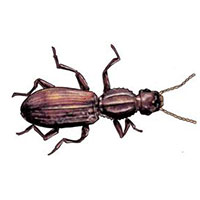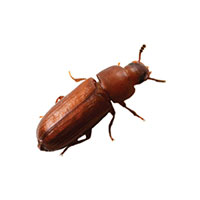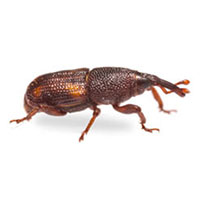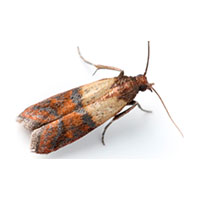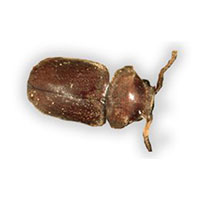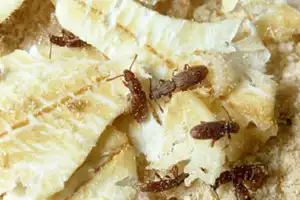
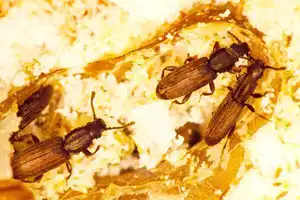
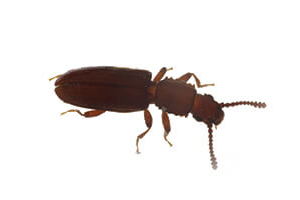
Sawtoothed Grain Beetle and Merchant Grain Beetle Diet
Both beetles are pests found feeding in nuts, seeds, biscuits, dried fruit, grain, and various other food products. They can chew through sealed packaging such as cardboard boxes, plastic bags, and foil wrappings.
The larvae develop in flour, cereal products, and many other dried foods, including grains, cereals, bread, pasta products, dried meat, dried fruit and nuts, sugar, chocolate, candy, tobacco products, and drugs.
Sawtoothed Grain Beetle and Merchant Grain Beetle Habitat
A common pest not only in grain bins, but also, mills, processing plants, warehouses, and kitchens.
Life Cycle
Sawtooth Grain Beetle Life Cycle: The female lays eggs singly or in small batches in food products, laying about 200 eggs in her lifetime. When the small, slender, and white eggs hatch after about eight days, the emerging larvae crawl and feed on finely divided food particles. It cannot feed on large particles such as whole grains. Adults usually live around 6 to 10 months.
Merchant Grain Beetle Life Cycle: The females lay about 300 eggs in her lifetime, which are dropped loosely among grain kernels or tucked into a crevice in a kernel. The tiny eggs are slender and white and hatch in three to five days when environmental conditions are optimal. The larvae emerge and crawl freely about the grain to feed on broken kernels. Total development from egg to adult requires about three to four weeks.
Sawtoothed Grain Beetle and Merchant Grain Beetle Damage
Although broken kernels are the preferred food of both species, sound kernels will sometimes be penetrated and fed on. The dry weight of grain may be reduced, but total weight may increase because of water absorption caused by the metabolic processes of insect populations. Molds may begin to grow on the gain, further reducing grain quality and value. The presence of live insects and/or insect parts can also result in a reduction of grain value. In some cases, grain can be rejected.
Sawtoothed Grain Beetle and Merchant Grain Beetle Prevention & Control
Grain Beetles Prevention
Sanitize: Properly sanitize grain bins before introducing new grain. Good sanitation involves the removal of old grain and dust in and around the grain bin, including removal of old grain from corners, floors, and walls. Any grain remaining when a bin is emptied can harbor insect infestations which will move into the new grain.
Vacuum: After inspection and discarding infested items, clean and vacuum cracks and crevices and shelves. Don’t forget to clean and vacuum under the shelves and any wire shelving.
Grain Beetles Control
If a sawtooth or merchant beetle infestation occurs, count on a professional pest management service to take care of the problem knowledgeably and successfully.
Need help with Sawtooth & Merchant Grain Beetles?
We'll call you! Leave your information below.

